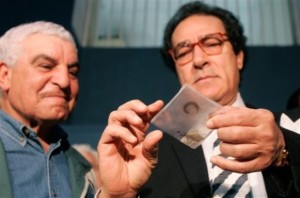My article on Sudanese museums and politics of identity in the transitional period 2005-2011 published in Egypte-Monde Arabe 5-6 (2009) on Heritage-Politics in Egypt and Sudan is now available on line on revues.org along with the rest of the book.
This article is part of the chapter 3: Politicisation and instrumentalization of Heritage in Sudan. This topic was investigated for the first time. The chapter comprises resourceful contributions of Iris Seri-Hersh (Iremam, Aix-en-Provence) on the recurrent use of the narratives of the Mahdiya in Sudanese politics, Ida Dykorn Heierland (Bergen University) on the political and economic use of archeological heritage in Naqa, Coralie Gradel (SFDAS, Khartoum) on the involvement of Lille III University in Sudanese archaeological research since the 1950’s and Constanza de Simone (UNESCO, Cairo) on the projected museum in Wadi Halfa.
Restitution d’oeuvres d’art: différentiels maghrébins
January 29, 2009
Above is the presentation related with the article beneath:
« La question des restitutions d’œuvres d’art : différentiels maghrébins », L’Année du Maghreb, Paris, CNRS édition, 2008, p. 79-97 (Dossier « La fabrique de la mémoire : variations maghrébines », dir. Jean-Philippe Bras).
Here is the introduction:
« Eh quoi ? Les indiens massacrés, le monde musulman vidé de lui-même, le monde chinois pendant un bon siècle, souillé et dénaturé, le monde nègre disqualifié, d’immenses voix à jamais éteintes, des foyers dispersés au vent, tout ce bousillage, tout ce gaspillage, l’Humanité réduite au monologue, et vous croyez que tout cela ne se paie pas ? » Aimé Césaire, Discours sur le colonialisme, 1950
Depuis une quinzaine d’années, les demandes de restitutions d’objets pillés par les puissances coloniales ne cessent d’augmenter en nombre comme en médiatisation. Parallèlement, la question des réparations de la dette morale et physique du colonialisme s’est engagée entre anciens colonisés et colonisateurs. Le débat sur les restitutions et les réparations conditionne les rapports Nord-Sud ; comme si, pour faire mentir Aimé Césaire, l’Humanité n’était pas réduite au monologue et que le bousillage devait être payé. La restitution d’oeuvres d’art sert-elle la réparation d’un passé bafoué ? Comment des objets de patrimoine sont-ils devenus des objets de conflits ? Read the rest of this entry »

